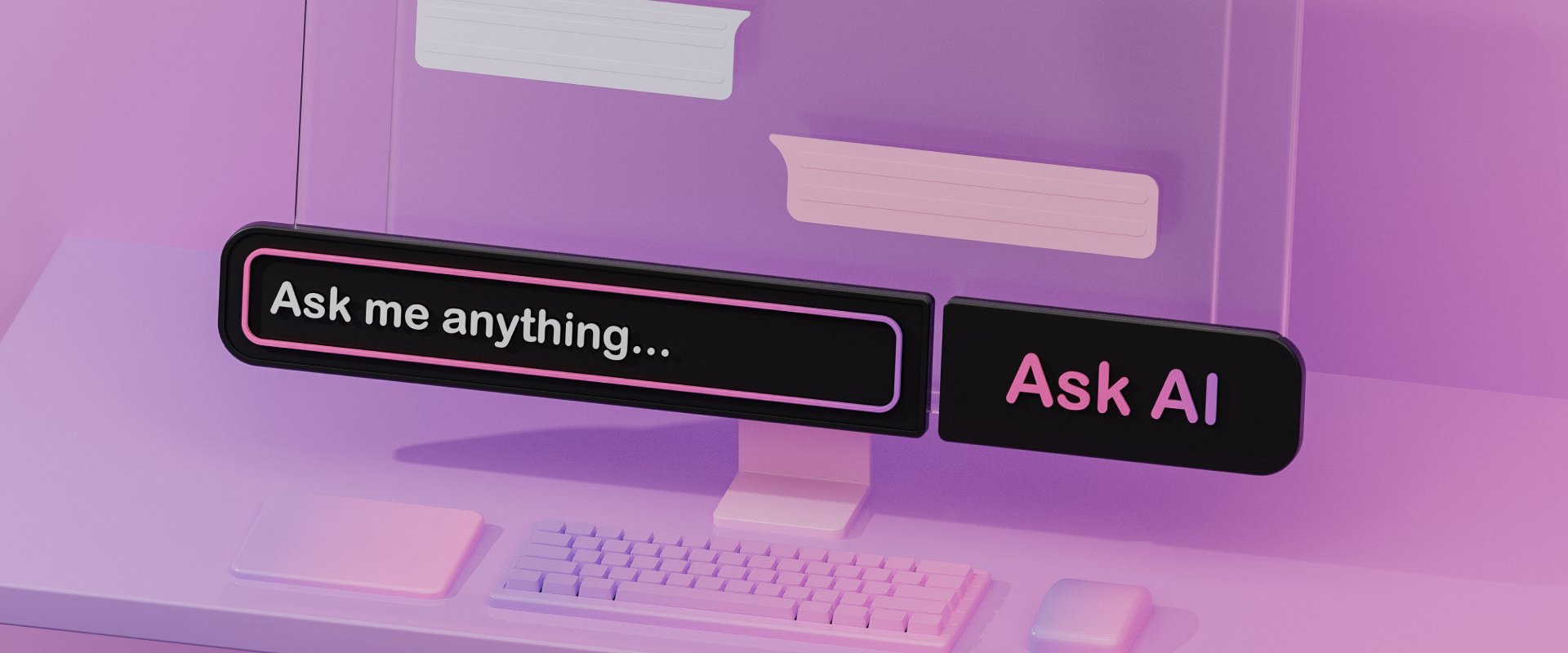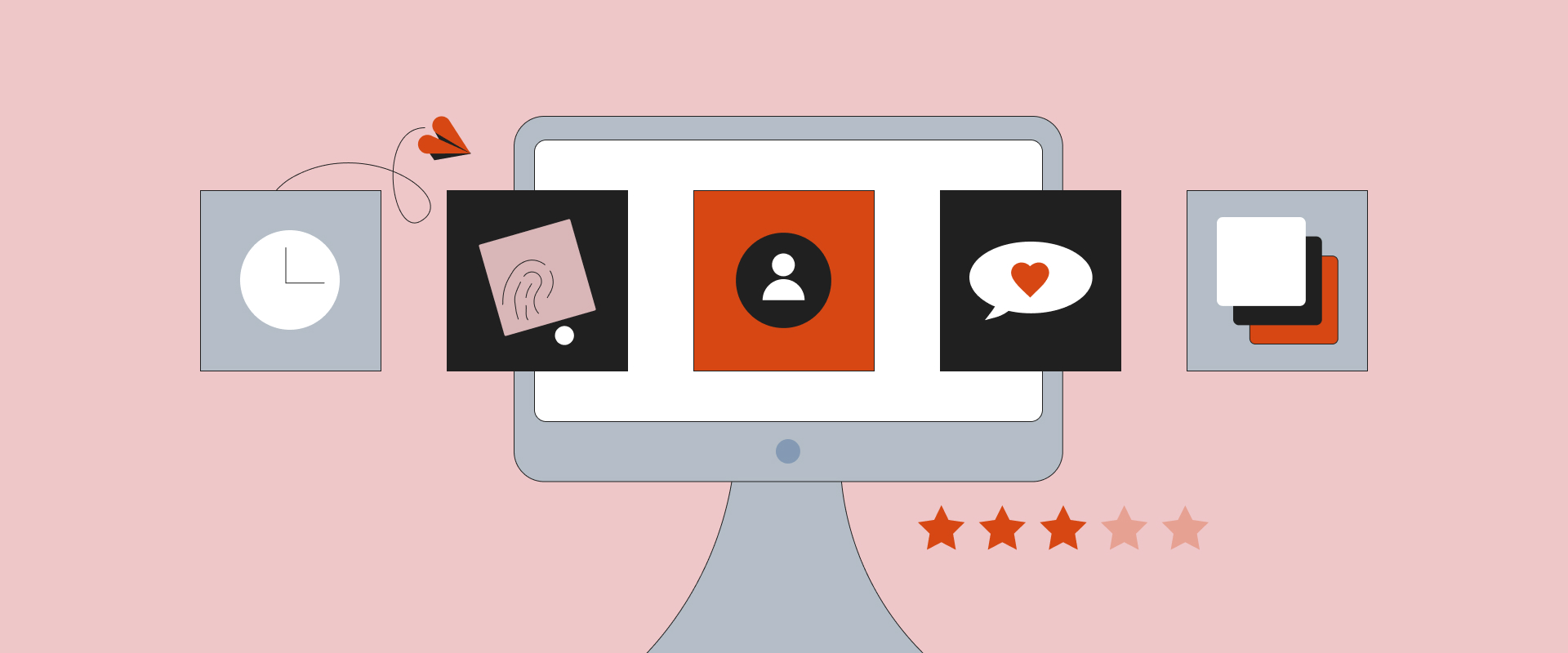Why Contextual Help Outperforms Onboardings in UX Design




Onboardings tend to complicate digital products, are hard to remember, and slow users down in completing their tasks. Yet, they're commonly used to inform and educate users. Why is that, and what can you do instead? After all, help is still a critical aspect of your product's user experience. Try contextual help! It can solve problems for both you and your users.
But, as expected, there's a catch. Isn't there always?
In this article, you'll learn more about the differences between onboardings and contextual help, also known as push and pull revelations. We'll go over their importance, limitations, and best practices, and, in the end, you'll know how and why to use them in your digital product.
The role of onboarding is to educate new and existing users about the different features and functionalities of a digital product. They’re often used to either promote features, give instructions, or request data for the customization of an application. Onboardings can come in the form of deck-of-cards – most commonly used in mobile apps – coach marks, intrusive overlay windows or interactive walkthroughs.

What all of these onboarding forms have in common is that they disrupt the user experience. Onboardings are push revelations – this means that they push information without context and insights about the user's intention. They are, therefore, system-initiated, which is why they're often skipped. However, research shows that even when users go through onboardings, they don't achieve greater success in their tasks compared to those who skip them.
On the other hand, contextual help – also known as adaptive help – provides information within context and knowledge about the user's actual intent. Its goal is to help users within their current journey, appearing only when necessary. This means that help is offered based on the user's behavior and therefore qualifies as a pull revelation.
Contextual help often comes in the form of guidelines, tooltips, contextual overlays, wizards, or inline instructions.

If contextual help seems like the natural choice, you might wonder why we still come across push revelations, such as deck-of-card onboardings, so often. Well, the answer lies between effort and benefit.
To provide qualitative contextual help, it's essential to understand your user's intentions and goals accurately. Otherwise, there's a risk of interrupting their experience. But, it's important to note that understanding user journeys is very complex – mastering it takes time, effort, user testing, and hands-on experience. Certainly, there are cases where the user's intention is easy to determine. However, there are also times when it's necessary to employ systems to track and analyze user behavior in order to accurately anticipate their intentions.
When launching a new digital product, there’s a possibility that the costs to implement contextual help may outweigh the perceived benefits. This is why companies often opt for system-initiated push revelations, such as deck-of-cards, that require less effort in design and development – even when it’s proven that push revelations often prevent users from completing their tasks.
Of course, there are cases when contextual help simply isn’t feasible due to high technical limitations. In addition, it’s generally always better to invest time in improving the usability of your product rather than explaining it. Nonetheless, contextual help, when implemented correctly, can and will bring real value to your product. And yes, it might take some effort to set it up, but you don’t have to be a big data company to do so. A good user experience designer will be able to implement contextual help with limited resources. I encourage you to try it because, in the end, it's the little things that make all the difference.
Customers are flooded with digital products every day, and 25% of new users won’t give your mobile app a second try. That’s why, especially for mobile apps, it’s important not to interrupt these valuable first seconds and the impression the brand leaves with a disruptive onboarding experience.
Customers expect high standards of user experience, without friction but with delight. What makes you stand out is the effort you put into every detail and every possible hurdle in your customer's journey. With contextual help, you create an experience that exceeds user expectations. In the long run, customer delight will become increasingly important in order for you to stand out from the competition.
As previously mentioned – to identify the right moments and triggers to offer help, it’s crucial to understand your user’s journey, intention, and goals. This is the foundation of contextual help but also the most challenging and costly step. Start small, focus on one feature first, like a newly added app function, and work your way up from there. Depending on the context and your digital product, you can choose a suiting UX pattern, like tooltips, contextual overlays, or inline instructions.
When building contextual help, keep these guidelines in mind:


Let’s take a closer look at Google Calendar. A few months ago, Google decided to replace the “Reminders” feature with the existing “Tasks” feature. Knowing how many people use reminders in their everyday lives, they introduced contextual help to make the feature change as smooth as possible. Weeks before the change, Google added an inline instruction to the user’s current reminders, explaining that they will be turned into tasks. This way, users were given the control to make the shift manually. If they didn’t do it then, later they’d see a tooltip where their reminders had been, with an explanation of how they transitioned into tasks.
At each point of the user’s journey, Google considered the user’s intent, which is to add a reminder. Only in the context of this soon-to-be-replaced feature did Google Calendar inform the user in a non-disruptive, simple, and easily dismissable way.

Once again, Google demonstrated this when they introduced the "working locations" feature to their calendar. In this case, a two-step guidance would only appear if the user clicks on the new "working locations" tab. This serves as the perfect example of educating users about a new feature at the right time and place without causing any disruptions.

Just remember, it doesn't have to be a new feature to make use of contextual help. For example, in Microsoft Teams, there's a hint to enter a message that appears above the text input field only if it remains focused for a long time without any input. This is very helpful (and very simple) for the users that need help figuring out what to do. For the users that use the message field as intended, however, the hint won't ever appear.

With a recent update to their operating system, Apple introduced a new feature to the "Notes" app, enabling users to mention other people in their shared notes. To inform users about this new feature and its implications, they displayed an inline instruction within the sidebar of their Notes app. This instruction stated that you can change your notification settings when mentioned in a shared note. Again, following the rules of good contextual help.

With contextual help, you can delight by exceeding user expectations. When mastered, it will help users at the perfect time in their journey, improving their current intention without disrupting it. In general, however, you should still focus on improving the usability of your digital product rather than explaining it.
In situations where additional help is valuable, use pull revelations instead of push revelations, such as intrusive onboardings. Although predicting user intent can be a challenge and sometimes even requires data collection and analysis. But even if your resources are limited, as a good user experience designer, you can work with your experience and intuition.
Trust your skills, follow the rules of contextual help, and enhance your products. With users' growing expectations and the strive for delightful experiences, contextual help will become even more important in the future.
Luis is a UX Designer at COBE. He loves to structure and simplify complex topics turning them into joyful, holistic, interactive experiences. When he's not at work, he enjoys interior design, DIY projects, and minimalism.




